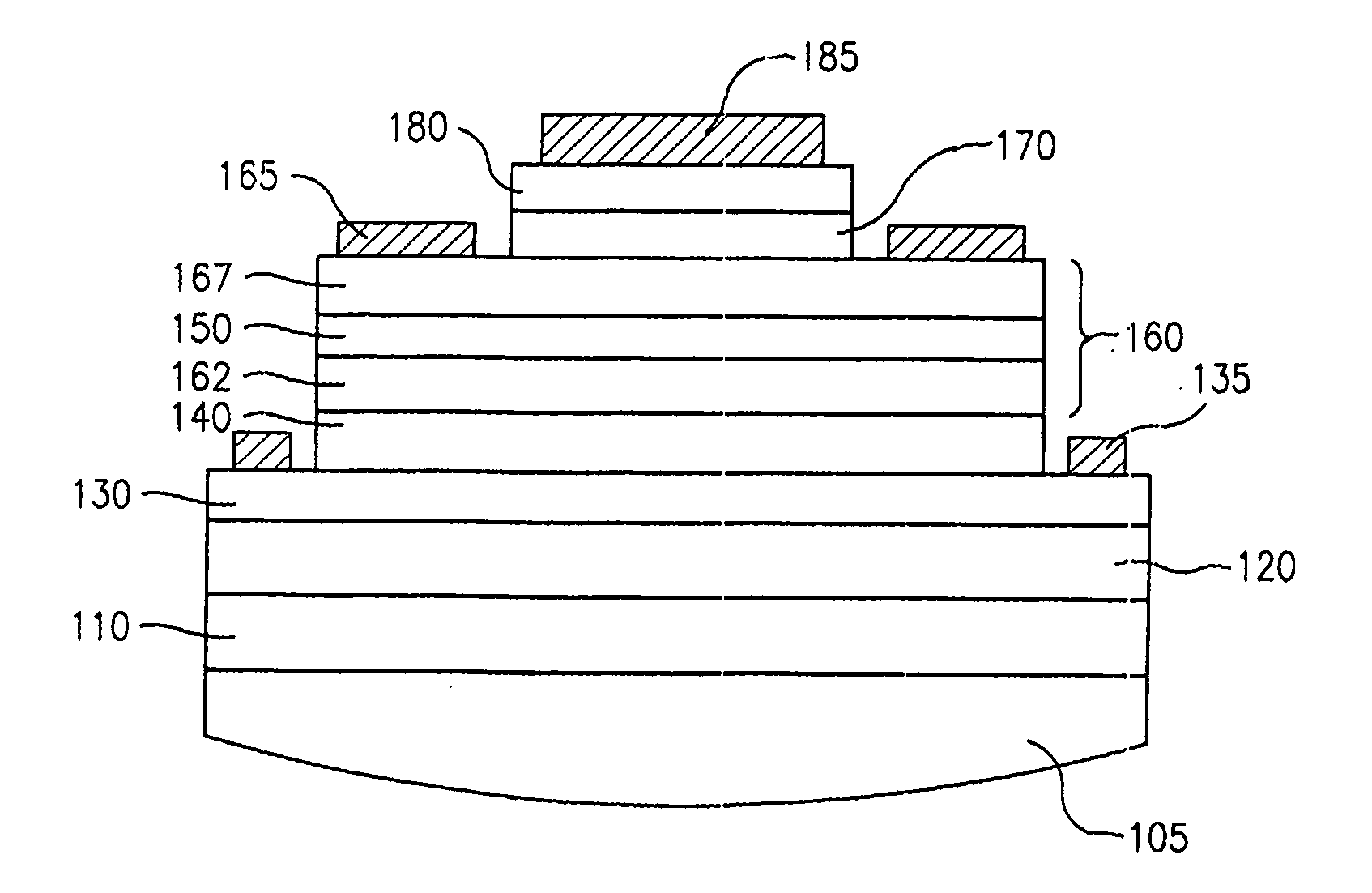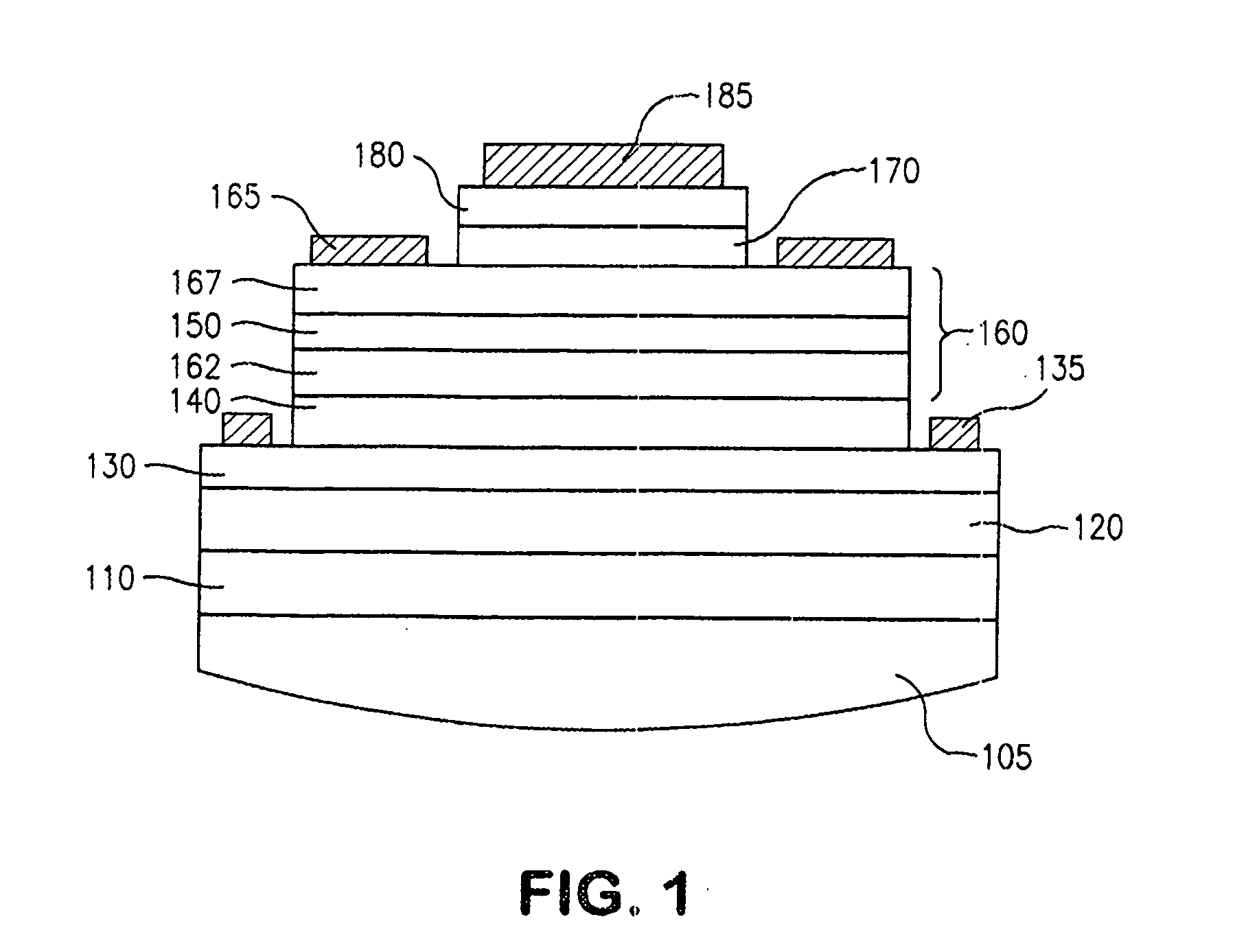Optical Tilted Charge Devices And Methods
a technology of tilted charge and charge device, which is applied in the direction of semiconductor/solid-state device manufacturing, semiconductor devices, electrical devices, etc., can solve the problems of transitioning from an optical tilted charge device to an optical tilted charge device design, and achieve the effect of high internal quantum efficiency
- Summary
- Abstract
- Description
- Claims
- Application Information
AI Technical Summary
Benefits of technology
Problems solved by technology
Method used
Image
Examples
Embodiment Construction
[0019]FIG. 1 shows a device in accordance with an embodiment of the invention, and which can be used in practicing an embodiment of the method of the invention. The semiconductor layering shown in FIG. 1, from the bottom up, includes: a GaAs substrate 110; a GaAs buffer region 120; a sub-collector region 130; a collector region 140; a base region 160 that includes a base sub-region 162 called “base-2”, a quantum size region 150 (one or more quantum wells or other suitable quantum size regions such as quantum dots or quantum wires), a base sub-region 167 called “base-1”, an emitter region 170, and a sub-emitter region 180. In accordance with a feature hereof, an InGaAsN quantum size region is employed in the base region. The collector, base, and emitter electrodes are shown respectively as metal collector contact 135 (which contacts the subcollector region), metal base contact 165 (which contacts the base-1 region), and metal emitter contact 185 (which contacts the sub-emitter region...
PUM
 Login to View More
Login to View More Abstract
Description
Claims
Application Information
 Login to View More
Login to View More - R&D
- Intellectual Property
- Life Sciences
- Materials
- Tech Scout
- Unparalleled Data Quality
- Higher Quality Content
- 60% Fewer Hallucinations
Browse by: Latest US Patents, China's latest patents, Technical Efficacy Thesaurus, Application Domain, Technology Topic, Popular Technical Reports.
© 2025 PatSnap. All rights reserved.Legal|Privacy policy|Modern Slavery Act Transparency Statement|Sitemap|About US| Contact US: help@patsnap.com



